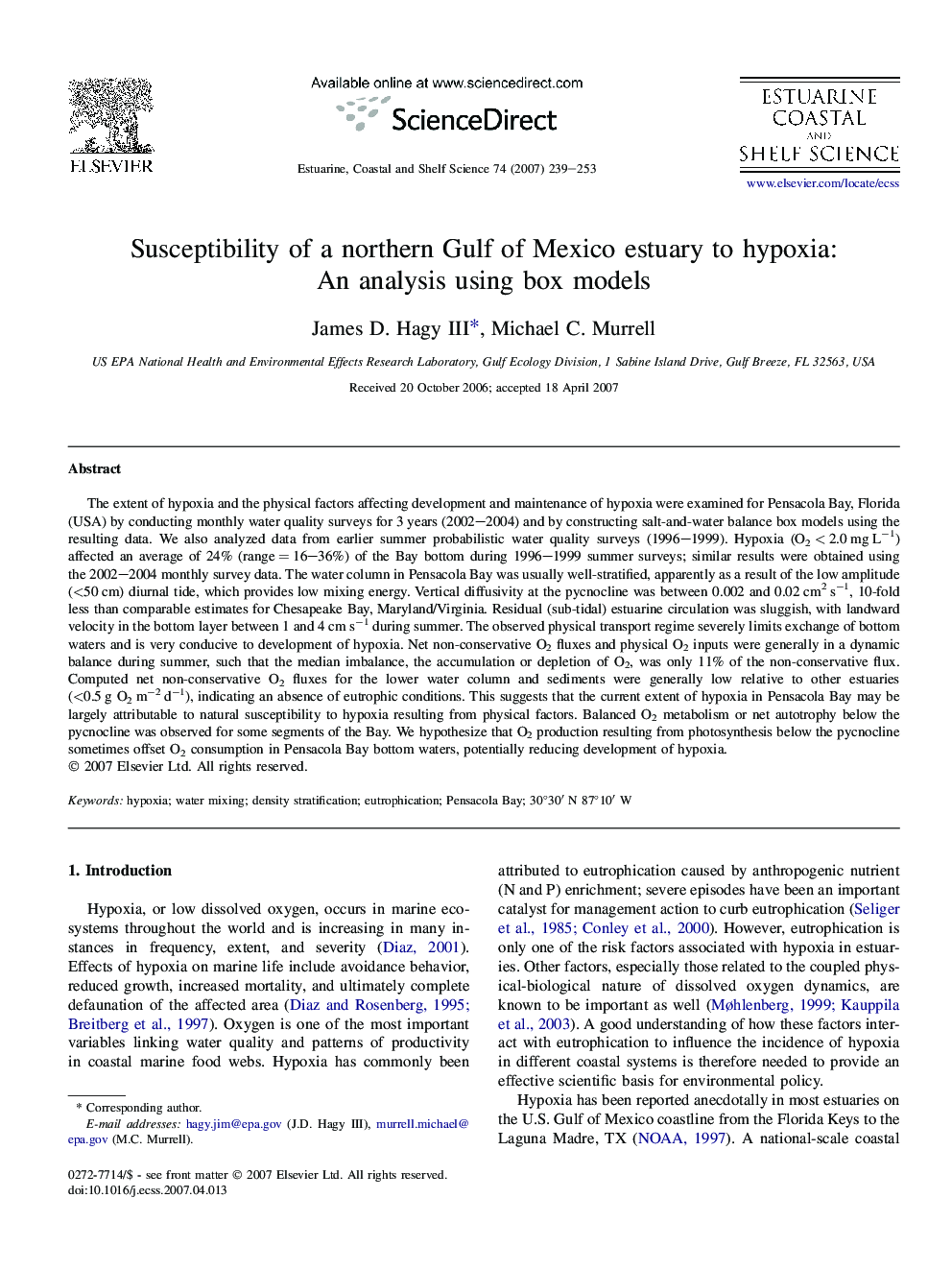| Article ID | Journal | Published Year | Pages | File Type |
|---|---|---|---|---|
| 4541763 | Estuarine, Coastal and Shelf Science | 2007 | 15 Pages |
The extent of hypoxia and the physical factors affecting development and maintenance of hypoxia were examined for Pensacola Bay, Florida (USA) by conducting monthly water quality surveys for 3 years (2002–2004) and by constructing salt-and-water balance box models using the resulting data. We also analyzed data from earlier summer probabilistic water quality surveys (1996–1999). Hypoxia (O2 < 2.0 mg L−1) affected an average of 24% (range = 16–36%) of the Bay bottom during 1996–1999 summer surveys; similar results were obtained using the 2002–2004 monthly survey data. The water column in Pensacola Bay was usually well-stratified, apparently as a result of the low amplitude (<50 cm) diurnal tide, which provides low mixing energy. Vertical diffusivity at the pycnocline was between 0.002 and 0.02 cm2 s−1, 10-fold less than comparable estimates for Chesapeake Bay, Maryland/Virginia. Residual (sub-tidal) estuarine circulation was sluggish, with landward velocity in the bottom layer between 1 and 4 cm s−1 during summer. The observed physical transport regime severely limits exchange of bottom waters and is very conducive to development of hypoxia. Net non-conservative O2 fluxes and physical O2 inputs were generally in a dynamic balance during summer, such that the median imbalance, the accumulation or depletion of O2, was only 11% of the non-conservative flux. Computed net non-conservative O2 fluxes for the lower water column and sediments were generally low relative to other estuaries (<0.5 g O2 m−2 d−1), indicating an absence of eutrophic conditions. This suggests that the current extent of hypoxia in Pensacola Bay may be largely attributable to natural susceptibility to hypoxia resulting from physical factors. Balanced O2 metabolism or net autotrophy below the pycnocline was observed for some segments of the Bay. We hypothesize that O2 production resulting from photosynthesis below the pycnocline sometimes offset O2 consumption in Pensacola Bay bottom waters, potentially reducing development of hypoxia.
